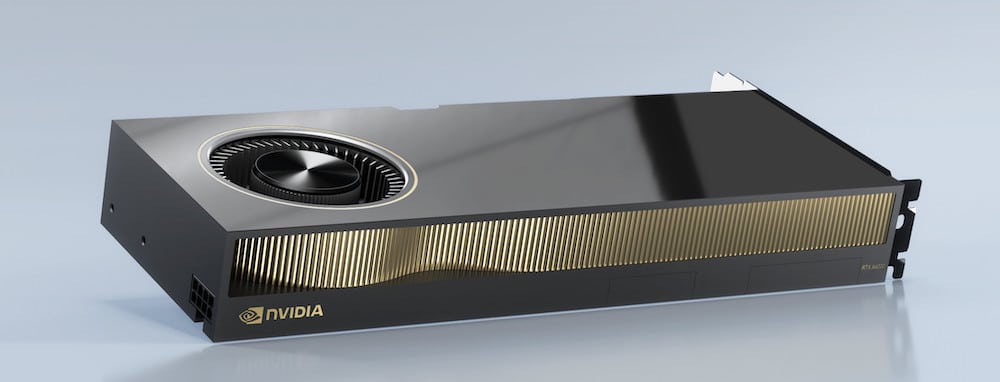Today, NVIDIA announced two new Workstation GPUs as part of the new Ampere architecture, the same architecture as the highly revered RTX 3080 and RTX 3090. The new NVIDIA RTX A6000 and A40 feature new RT Cores, Tensor Cores, and CUDA cores that accelerate graphics, rendering, compute, and AI significantly faster than previous generations. Despite what the name might suggest, the RTX A6000 seems to actually be the successor the Quadro RTX 8000, sharing its same 48GB of GDDR6, expandable to 96GB when using two cards over an NVLink. The A40 is the same card, but intended for use in servers.
Read More – NVIDIA RTX A6000 Review

There have been several (lucky) early adopters to these cards, all with good things to say:
- Predator Cycling, which specializes in custom carbon bicycles and builds them by hand in the U.S., has seen potential from the NVIDIA RTX A6000 to accelerate every aspect of their process. Performance gains of 2-6x across a number of key applications give the team the power to simultaneously run analysis, modeling and screen-sharing on a video call.
- HKS, Inc., a leading architectural design firm, has seen the potential of the NVIDIA RTX A6000 to receive near instantaneous feedback on design changes while running simulations in real time. This gives them the ability to bring real building simulation down from days and weeks, to minutes or hours.
- Framestore, an Academy Award-winning animation and visual effects company in the U.K., can do real-time ray tracing on massive datasets in a remote workstation environment, which is made possible by the new NVIDIA RTX A6000, HP ZCentral, and NVIDIA Omniverse.
- Kohn Pedersen Fox Associates, is one of the world’s largest architecture firms and notes the ability to triple resolution and accelerate real-time visualization of complex building models.
The details of these GPUs are a bit sparse from NVIDIA’s official release, but leaks show the A6000 to have 10,752 CUDA cores, 336 third generation Tensor cores, and 84 second generation Ray-Tracing cores. The official information provided is as follows
- Second-Generation RT Cores: Delivers up to 2x the throughput of the previous generation, plus concurrent ray tracing, shading and compute.
- Third-Generation Tensor Cores: Provides up to 5x the throughput of the previous generation, up to 10X with sparsity, with support for new TF32 and BF16 data formats.
- New CUDA Cores: Delivers up to 2x the FP32 throughput of the previous generation for significant increases in graphics and compute.
- 48GB of GPU Memory: The largest memory available in a single GPU, expandable to 96GB using NVLink to connect two GPUs.
- Virtualization: With the addition of NVIDIA virtual GPU software such as the Quadro Virtual Workstation, we can support graphics workloads and powerful virtual workstation instances at scale for remote users, enabling larger workflows for high-end design, AI, and compute workloads.
- PCIe Gen 4: Provides twice the bandwidth of the previous generation, accelerating data transfers to the GPU for data-intensive workloads like data science, hybrid rendering and video streaming in PCIe Gen 4-enabled servers and workstations such as the Lenovo ThinkStation P620.
Availability should start within the next few months. A wide range of NVIDIA RTX A6000-based workstations are expected from the major systems manufacturers, including BOXX, Dell, HP, and Lenovo. A wide range of NVIDIA A40-based servers are expected from the usual suspects, including Cisco, Dell, Fujitsu, Hewlett Packard, and Lenovo. The RTX A6000 will also be available from channel partners including PNY, Leadtek, Ingram Micro, Ryoyo and on nvidia.com starting in mid-December. The NVIDIA RTX A6000 and NVIDIA A40 will be available from OEM workstation and server vendors worldwide starting early next year. Check with OEM vendors for details on availability. Support for NVIDIA virtual GPU software, including Quadro Virtual Workstation, will be available early next year. No word on pricing, but expect workstation GPU prices.
Read More – NVIDIA RTX A6000 Review




 Amazon
Amazon